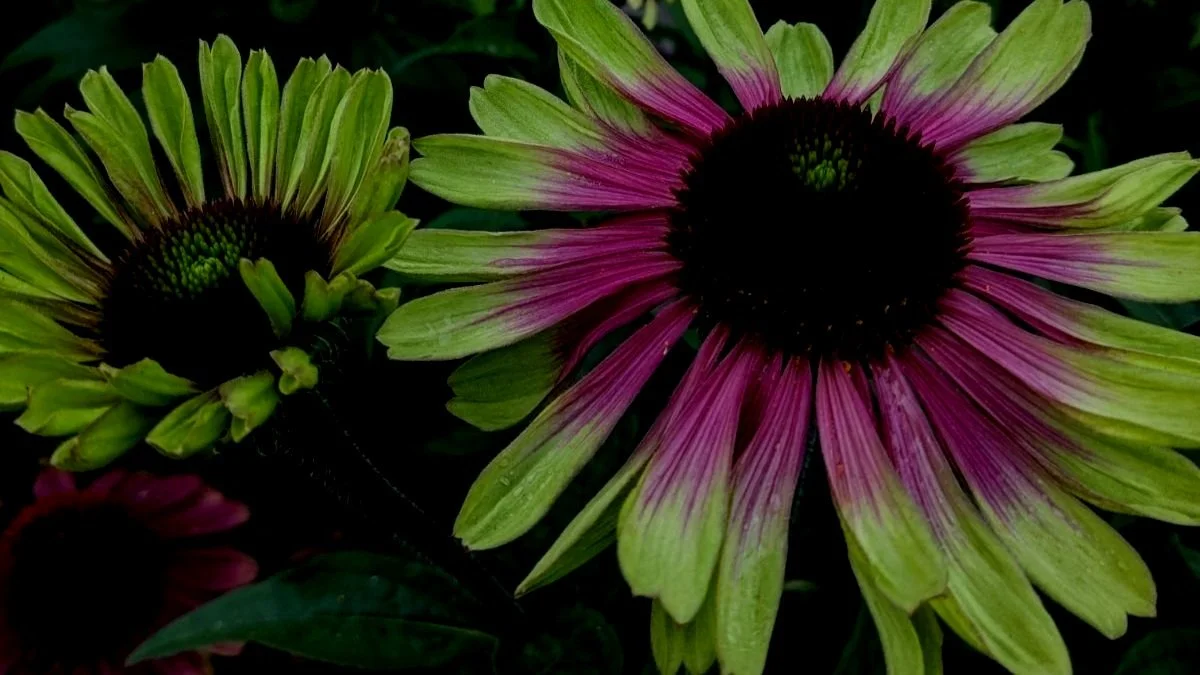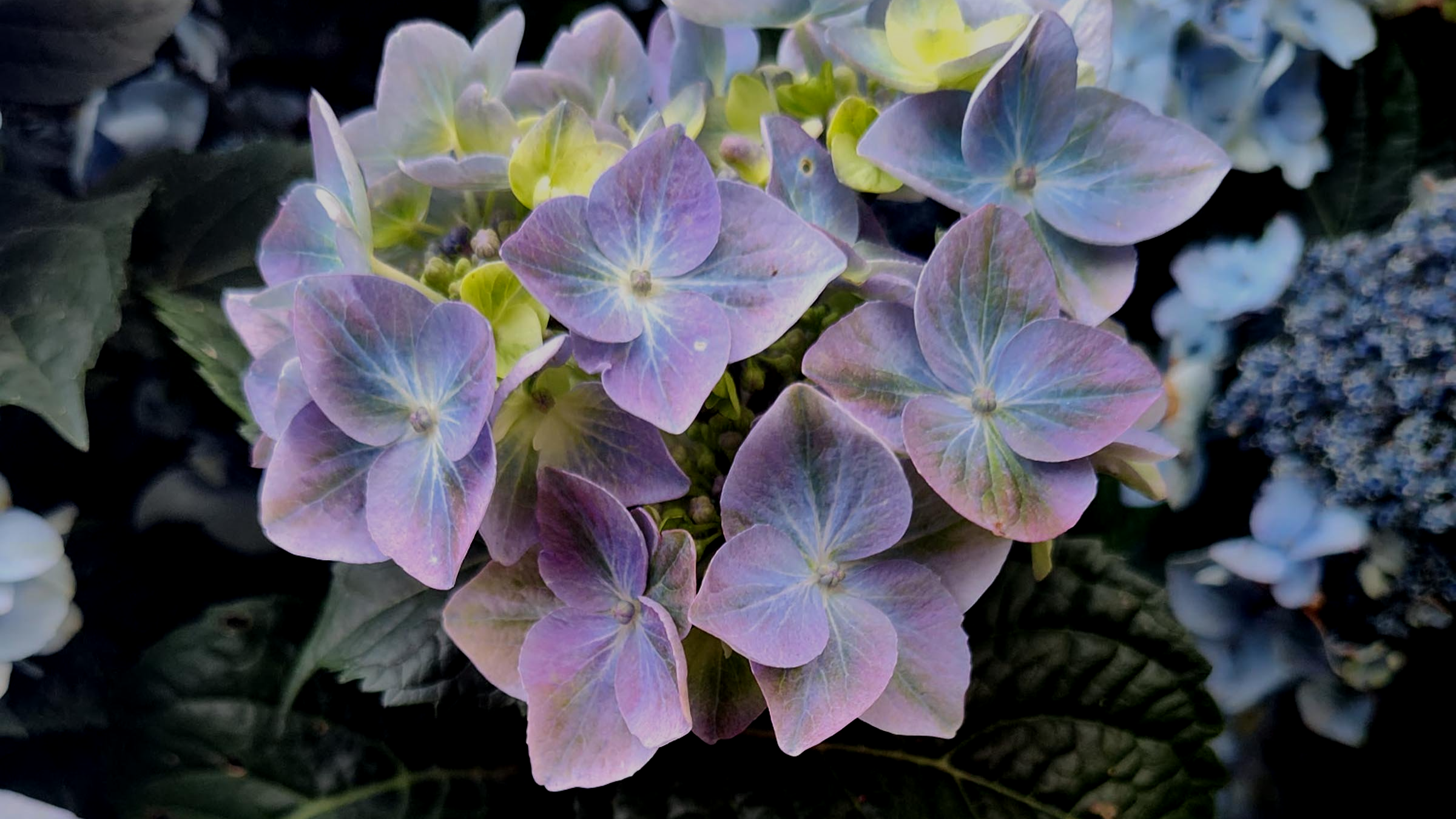Now that we are in the heat of the summer, perennials like Coneflowers are blooming and providing important benefits to our pollinators. Personally, I have a number of these cultivars planted in my own landscape and truly enjoy their simplicity, bright colors and low-maintenance qualities. Coneflowers (Echinacea) can be found in a plethora of color options, from my favorite orange to white, yellow, pink, apricot, peach, red, lime green or burgundy and lots of fun combinations and shades of each. There are certainly places for a singular coneflower here and there but, like other perennials, consider planting them in mass, a swathe, or even a group of three like I do - all of which provides more impact in the landscape. You can even use a mix of cultivars, adding contrasting colors that make them pop!
The Coneflower has come to symbolize strength and resilience for gardeners due to their ability to thrive in harsh native conditions. They are one of the best drought tolerant plants (once established), and even resist browsing deer. Coneflowers are not immune to pesky rabbits; they nibble a bit on my plants each spring but never cause any long term damage. The native species of Echinacea have had a number of medicinal uses for indigenous people across North America, going back millennia, and they continue to be utilized in many natural products today. Echinacea is reported to boost our immune system and will also help with many ailments; including skin issues to blood circulation to even hair loss, which I may have to try on my scalp one of these days!
Modern Coneflower hybrids, of all kinds, provide huge benefits for both pollinators and birds. Their flat flowers are ideal landing strips for butterflies, and their central cones are packed with pollen, perfect for browsing bees. In the fall, once flowers are spent, the seeds in each cone mature and provide nourishment to scavenging songbirds, well into winter. This is one perennial you should never be in a hurry to cut back in the fall – leave them until early March and then cut to a couple of inches above the soil. Thinking of fertilizing? Coneflowers are not heavy feeders, at most I would recommend a single dose of a granular organic rose/flower food with alfalfa in the early spring.
Almost all Echinacea are hardy down to Zone 4 (-20 degrees F), so the issue around here is not the cold but the “winter wet”, as I call it. Poor drainage is the kiss of death, so be sure to add compost when planting and site them in hot, sunny, well-drained locations - without exception. They also make excellent container plants and their flowers are super popular in any cutting garden. Bringing them inside will liven up any fresh bouquet. Some Coneflowers are even slightly fragrant, nose candy for any PNW gardener to enjoy. Breeders continue to introduce excellent cultivars year after year, often in the form of a series of colors. Many of these may look close, but they all differ a bit, often with a subtlety like stem color or cone color for added interest in the garden. Some may sport traditional single flowers, while others pop with double blooms. Many of the modern varieties boast more compact growth, stronger stems and longer bloom times, but there is nothing wrong with taller old-school flavors as well. In all honesty, I have yet to meet a Coneflower not worth trying in my garden! There are so many good ones worth mentioning, but here are few I would steer any local gardener towards…
‘Sweet Sandia’: This selection has unique color and frankly looks like a slice of fresh watermelon minus the seeds, with a pinky interior radiating out towards lime green to white on the edges. I think this is one of most unique varieties I have seen, and a great compact grower under 2feet tall with blooms from early summer into fall. The deep red-orange cone in the center is a bee magnet.
'Double Scoop Deluxe’: To be frank, the double versions of Coneflowers are not my thing, but they are certainly a favorite of many of our patrons here at the nursery. They come in a number of delicious flavors like ‘Watermelon’, ‘Raspberry’ and ‘Strawberry’. All are nice compact plants under 2feet tall, with vastly superior flowering and much stronger growth than older double Coneflowers, for sure.
‘Prima Tiger’: This one I have my own yard (actually a nice grouping of three of them) and it has become one of my favs for sure. These are some of heaviest bloomers I own with tangerine-gold flowers, that are a little more orange in the center, and clumps that stay under 18inches in height. There are others in this newer ‘Prima’ series to discover as well, like ‘Saffron’, ‘Ruby’ and ‘Ginger’. Perhaps the next purchase for my own plant addiction!
‘Evolution Series’: These are some of the best for more than one color. As flowers open and mature, several shades will often be shown in various blooms. ‘Colorfiic’, as an example, sports varying pinks with a lovely bright green cone in the center. ‘Fiesta’ opens bright coral and then fades into other more subtle shades over the summer. ‘Yellow Falls’ may be the best yellow option to date, blooming with slightly weeping petals and a beautiful central cone. All are nice and compact under 24inches tall with strong sturdy stems.
‘Kismet Series’: These Coneflowers offer a rainbow of options, bloom heavily well into fall, and have enhanced survivability over many others. ‘Kismets’ are all about flower power and were bred for us gardeners as such. Colorful flavors like ‘Intense Orange’, ‘Raspberry’, ‘Red’, ‘Yellow' or even simple, yet classy ‘White’ can be found. Compact clumps may reach 18inches in height in the garden, and as they mature they stay extra tidy.
The Coneflower has simply become one of the poster-children for pollinators in the PNW over the years. Visit your local garden center this time of year and speak with a Certified Professional Horticulturist, as they can offer assistance on how to grow them successfully and help steer you to the best varieties for your own garden. Look for some of the beauties mentioned above, or many of the other great cultivars that are out there. These little summer blooming machines will surprise you with their color options, and entice your pollinating friends to hang out with you in your garden.



